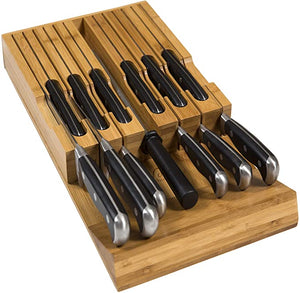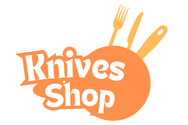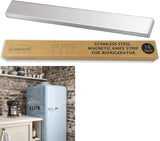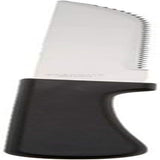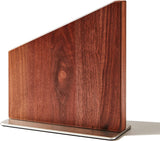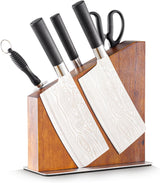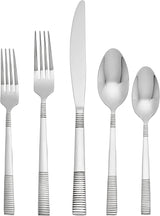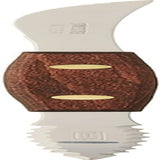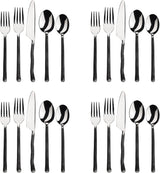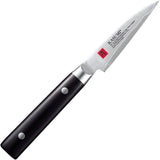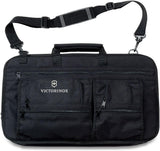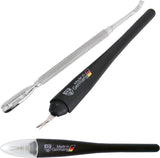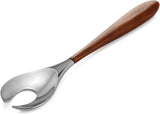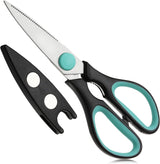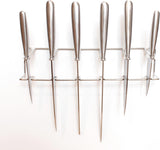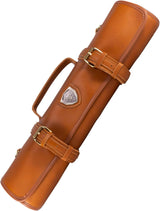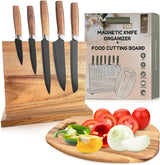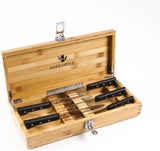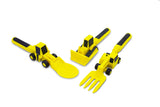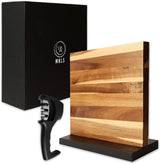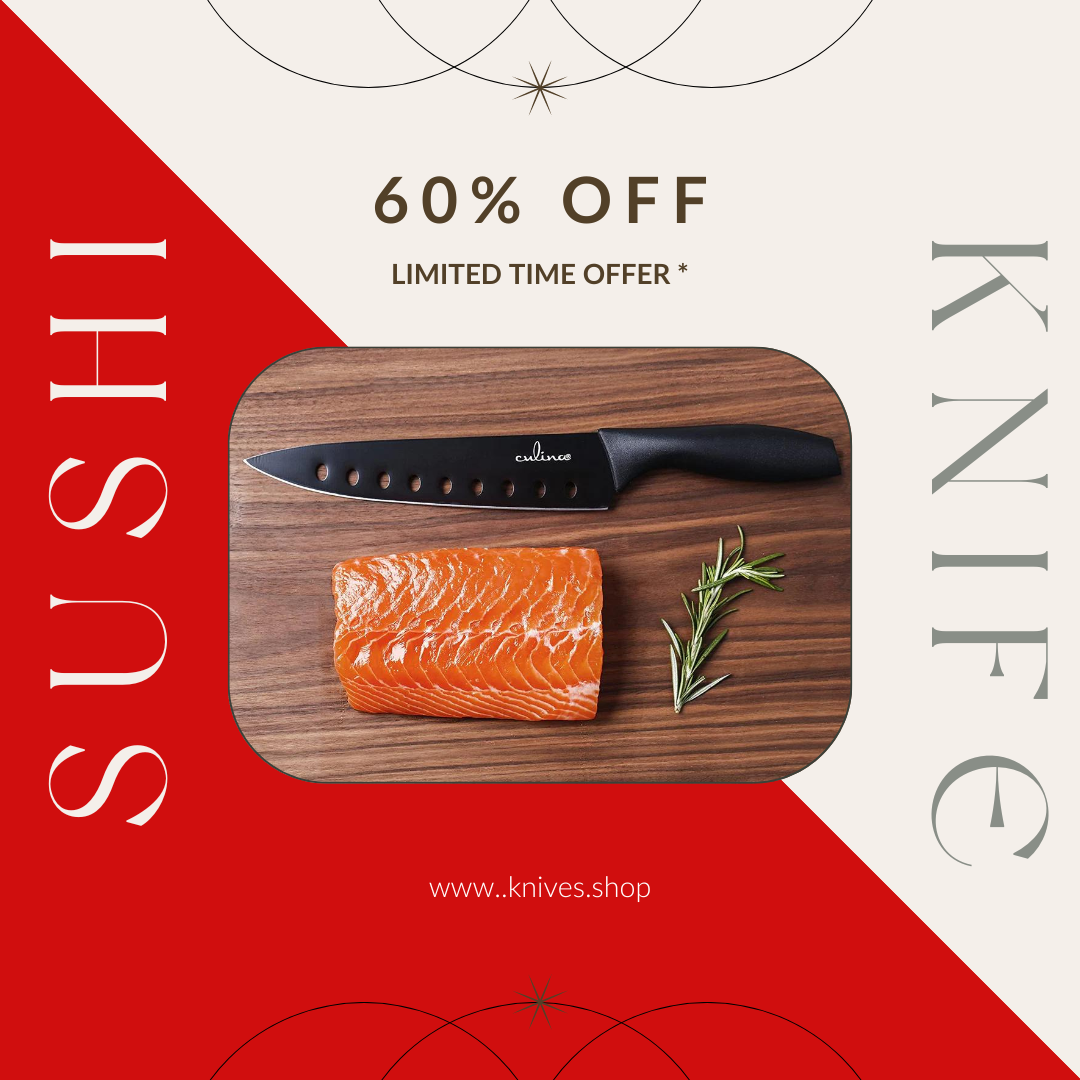
Alt text: A selection of kitchen knives on a wooden cutting board.
Introduction
Whether you're a seasoned chef or a beginner in the kitchen, knowing how to use kitchen knives effectively is crucial for cooking. In this comprehensive guide, we'll walk you through the proper use of kitchen knives to help you achieve optimal cooking results. We'll cover everything from choosing the right knife for the task, mastering basic knife skills, to maintaining your knives to ensure they last a lifetime. So, let's get started!
Choosing the Right Knife
Before we dive into the techniques, it's important to understand that different knives serve different purposes. Each type of knife has its unique features designed for specific tasks in the kitchen.
Chef's Knife
The chef's knife is the workhorse of the kitchen. Typically 8 inches long, this versatile tool is perfect for a variety of tasks, from dicing onions to mincing herbs. The broad and heavy blade also allows it to handle more robust tasks like cutting through joints or hard vegetables.
Paring Knife
On the other hand, a paring knife, with its small and narrow blade, is ideal for more delicate tasks. You'll find it perfect for peeling fruits, deveining shrimp, or making precise cuts for garnishes. Its size allows for better control, especially for intricate tasks that require a delicate hand.
Bread Knife
A bread knife is characterized by its long blade with serrated edges. This design allows it to cut through crusty bread without crushing the soft interior. But it's not just for bread - it's also great for cutting through other foods with a hard exterior and soft interior, like tomatoes or sausages.
Utility Knife
A utility knife is a medium-sized knife that fills the gap between a chef's knife and a paring knife. It's great for tasks that are too small for a chef's knife but too big for a paring knife, like slicing medium-sized fruits and vegetables or sandwich meats.
Boning Knife
A boning knife has a thin, flexible blade that's perfect for removing meat from bones. Whether you're deboning a chicken or filleting a fish, a boning knife can maneuver around bones and joints where a chef's knife can't.
Understanding the different types of kitchen knives and their uses can significantly improve your efficiency and precision in the kitchen. For a more detailed guide on the types of kitchen knives, check out this article.
Basic Knife Skills
Now, let's get to the heart of the matter: how to use kitchen knives. Here are some basic skills you need to master:
Holding the Knife
The way you hold the knife can significantly affect your control and precision. The most recommended grip is the 'chef's pinch'. This involves pinching the base of the blade between your thumb and index finger, while the rest of your fingers wrap around the handle. This grip gives you better control over the knife, making your cutting more precise and safe.
Cutting Techniques
There are several cutting techniques that every home cook should know:
-
Chopping: This is the most basic technique. Hold the knife at its bolster and cut straight down. This technique is great for rough cuts where precision is not necessary.
-
Dicing: This involves cutting an ingredient into small cubes. It's often used for vegetables like onions andpeppers. To dice, first cut the ingredient into slices, then cut the slices into strips, and finally cut the strips into cubes.
-
Mincing: This is used for cutting ingredients into very small pieces, often used for garlic or herbs. To mince, you'll need to rock the knife back and forth over the ingredient until it's finely chopped.
-
Julienne: This technique involves cutting ingredients into thin, long strips, often used for vegetables in stir-fries or garnishes. To julienne, first cut the ingredient into thin slices, then stack the slices and cut them into thin strips.
-
Chiffonade: This technique is used for cutting leafy vegetables or herbs into thin strips or ribbons. To chiffonade, stack the leaves, roll them tightly, and then slice the roll.
-
Tourne: This is a more advanced technique used for cutting vegetables into a football-like shape with seven equal sides. It's often used in professional kitchens for aesthetic purposes.
Mastering these cutting techniques can significantly improve your efficiency in the kitchen and also make your dishes look more professional. For a more detailed guide on these cutting techniques, check out this article.
Knife Safety
While we're on the topic of using kitchen knives, it's important to talk about knife safety. A sharp knife is a safe knife. It might sound counterintuitive, but a sharp knife is less likely to slip and cause accidents than a dull one. Here are some safety tips when using kitchen knives:
-
Keep Your Knives Sharp: A sharp knife requires less force to cut through food, reducing the chance of slipping.
-
Use a Cutting Board: Always use a cutting board when cutting. Avoid cutting on hard surfaces like glass or metal, which can dull your knife and cause it to slip.
-
Hold the Food Correctly: When cutting, tuck your fingers under and use your knuckles as a guide for the knife. This 'claw grip' keeps your fingers safe from the blade.
-
Keep Your Knife Clean: Food residue can make the knife handle slippery. Always clean your knife immediately after use.
-
Store Your Knives Safely: When not in use, store your knives in a knife block or on a magnetic strip. This not only protects the blades from damage but also keeps them out of reach of children.
Remember, safety should always be your top priority when using kitchen knives. For more knife safety tips, check out this article.
Knife Maintenance
Taking care of your knives is just as important as knowing how to use them. A well-maintained knife not only lasts longer but also makes your cutting safer and more efficient. Here are some tips:
Cleaning
Always clean your knives by hand with warm soapy water. Avoid putting them in the dishwasher as it can dull and damage the blades. After washing, dry your knives immediately to prevent rusting.
Sharpening
Regularly sharpen your knives to keep them in top shape. You can use a sharpening stone or a knife sharpener. The frequency of sharpening depends on how often you use your knives, but a good rule of thumb is to sharpen them when you notice a decrease in performance.
Storage
Store your knives in a knife block or on a magnetic strip. This protects the blades from damage and also keeps them out of reach of children. Avoid storing your knives loose in a drawer as it can dull the blades and also pose a safety risk.
Conclusion
Mastering the use of kitchen knives can take your cooking to the next level. With the right knife skills, you can prepare ingredients more efficiently and safely. Remember, practice makes perfect. So, grab your knife and start practicing these techniques today!
In this guide, we've covered everything from choosing the right knife, mastering basic knife skills, to maintaining your knives. But remember, the journey doesn't stop here. Continue to learn and practice, and don't be afraid to try new techniques. Cooking is a lifelong journey of learning and discovery.
Also, don't forget to invest in a good set of knives. A good knife can make a world of difference in your cooking. It's not about the price, but the quality and how well it fits your hand and cooking style. So take your time to find the right one for you.
Finally, always remember to respect your knife. It's not just a tool, but a partner in your cooking journey. Take good care of it, and it will take good care of you.
Thank you for reading this guide. We hope it helps you in your cooking journey. If you have any questions or suggestions, feel free to leave a comment below. We'd love to hear from you!
